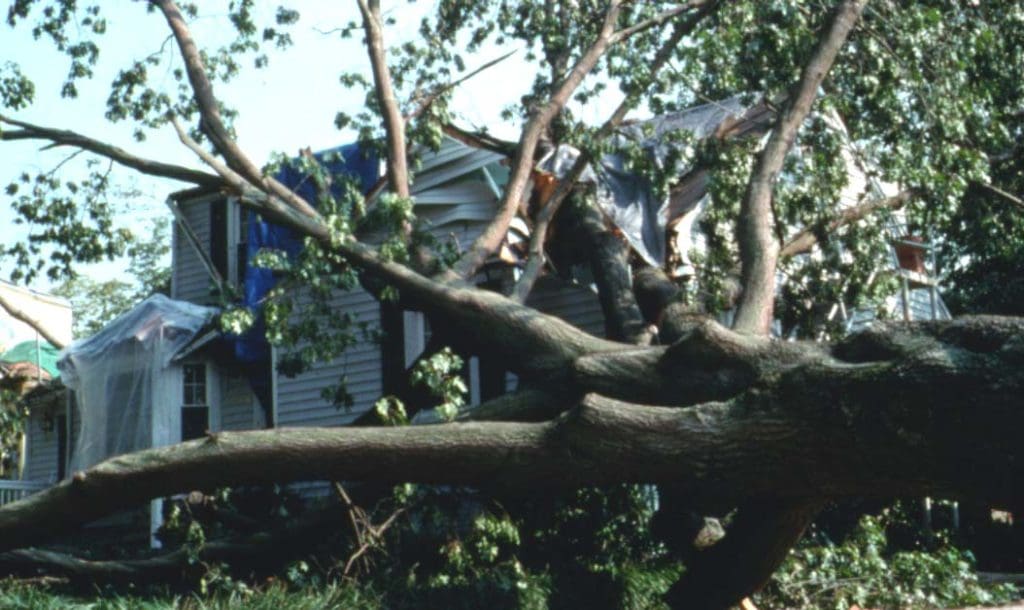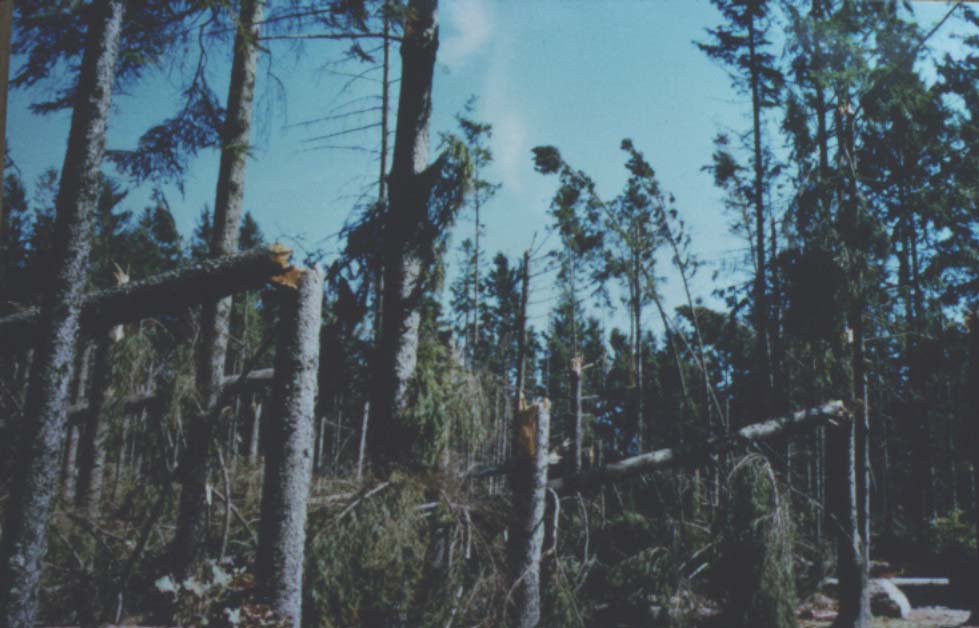
If you’ve been debating adding a full-service tree care line, one niche aspect of this offering is post-storm cleanup. Emergency storm work is a hazardous undertaking, but going about it safely and efficiently can be a profitable endeavor.
“Providing services related to storm damage is part of being a full-service tree company, and I recommend you either prepare to handle the risks and debris or partner with a company that is set up to deal with dangerous storm work and the sheer volume of debris,” says Patrick Brewer, division manager and vice president, Southwestern division for Bartlett Tree Experts.
Response Time
Brewer says they generally know when a storm is coming and will prepare before it hits.

“We begin contacting customers during a storm and then dispatch as soon as weather conditions allow our crews to operate equipment safely,” says Chase Kepley, head of business development for Xylem Tree Care – Carolinas.
Xylem Tree Care has crews on call and on standby for storm events. Bartlett also has someone on call 24 hours a day at all of their offices.
Brewer says they will not send their crews out until they know conditions are safe, as after a hurricane or an ice storm, the roads may be icy or downed powerlines. He says typically, they will dispatch crews the morning after an event, but they can respond sooner if there is a critical need.
“Public health customers and those providing essential services, including hospitals and care facilities, are prioritized and typically demand immediate response, but only after we scout the conditions for safety,” Brewer says.
Clean Up Process
Mark Griffith, commercial/residential manager for Xylem Tree Care – Virginia, says storm-damaged trees create different hazards, including debris underneath, tension, and compression wood requiring a more technical cleanup.
“Storm damage is by nature unpredictable and requires much more diligence during the site inspection before we start the work,” Brewer says. “Hidden hazards are a significant challenge with storm damage, and we require a thorough job site safety analysis before work is started.”
Kepley says that pre-job hazard analysis, job briefings and state-of-the-art equipment all aid them in taking on hazardous tree removals. He adds that clear onsite communication is key.
Brewer says because storm work damage presents different challenges, they won’t send out just anyone but rather their ‘A-Team’ of arborists.
“This involves the use of a skills assessment system that allows us to easily and quickly identify the best production workers to deploy,” Brewer says. “Our response teams include arborists who are experienced and highly skilled at working in dangerous conditions and complex scenarios. Our assessment system also allows us to pick team members skilled in other specialized tree work tasks, such as crown restoration and tree inspections.”
Bartlett also uses specialized equipment to handle tree blowdowns, large broken branches and other heavy debris. Brewer says these situations call for cranes, log trucks and wood loaders.
“Storm cleanup work requires a very different array of equipment just to deal with the sheer bulk of debris,” Brewer says.
Xylem Tree Care mostly uses the same equipment, just on a larger scale during storm work, but they will use a crane if deemed necessary.
Risk Mitigation
Storm cleanup crews will also work to make the remaining landscape more resilient.

“Once we are on site, we offer to help customers evaluate their trees and prune for risk mitigation,” says Kepley. “We also consider plant health care intervention for trees of high value that may have suffered stress from the storm. In addition, removing poorly structured branches can prevent future issues.”
Brewer says they will identify structural weaknesses in the remaining trees and prune or add structural supports to these trees.
“Over-extended branches, heavy end weight which can overload a branch, and poor branching habits all can be addressed during pruning,” Brewer says. “Depending on the urgency, this may occur in a follow-up visit.”
Both companies strive to save storm-damaged trees whenever possible.
“This requires a thorough inspection and species-specific pruning prescription,” Brewer says. “In many cases, this pruning requires follow-up visits to restore the structure of the tree.”
Tips for Success
Storm damage is usually something covered by insurance companies, but Brewer advises avoiding being paid by the owner’s insurance if at all possible.
“We bill the customer (the owner) and they resolve any issues related to their claim with the insurance company,” Brewer says. “If that is not possible, we assist our clients in navigating the process of documentation that insurance adjusters typically require.”
Griffith agrees that the property owner is responsible for working with their insurance, but they will provide guidance.
“Our professionals take photos and detailed notes before, during, and after the removal process to ensure everyone involved is clear on the service we promised and delivered,” Kepley says.
Because storm cleanup is a complex process, it is advised to have a dedicated individual designated as the manager so there is one point of contact.
“The administrative duties are taken on by a team of administrative assistants who coordinate employee skill assessments, lodging, and travel,” Brewer says. “On the ground, the efforts of our arborist crews are managed by a team of arborist representatives and led by a manager. There are many moving points in a large storm recovery effort!”
Griffith stresses that the conditions for storm cleanup can be difficult and dangerous. Equipping your crews with proper PPE is critical for their safety.
“Take your time to safely analyze each job and have a plan that everyone, including the customer, can agree upon,” Kepley says. “Being honest and upfront with the customer will prevent a lot of headaches down the road.”
Brewer advises always responding to your customers first.
“There are companies that make their living out of chasing storms for the ‘quick money,’” Brewer says. “While storm cleanup can seem like a quick way to gain market share, the truth is that you are as likely to lose customers than gain them if you cannot respond quickly to address their need.”

